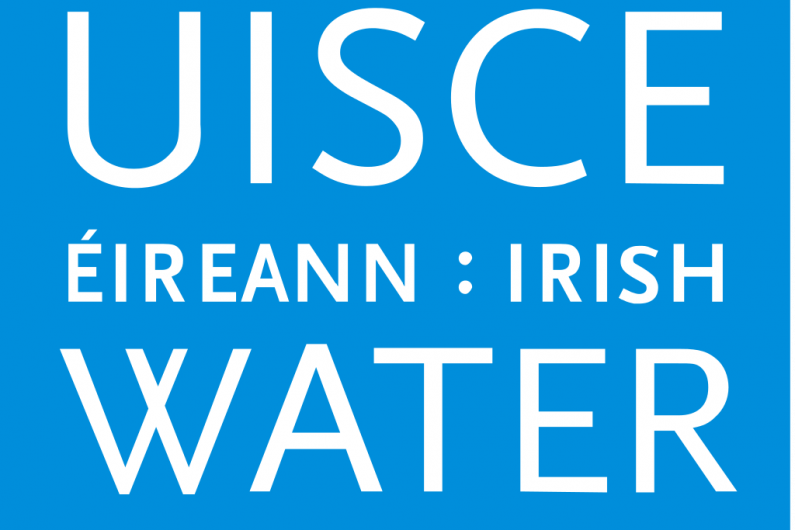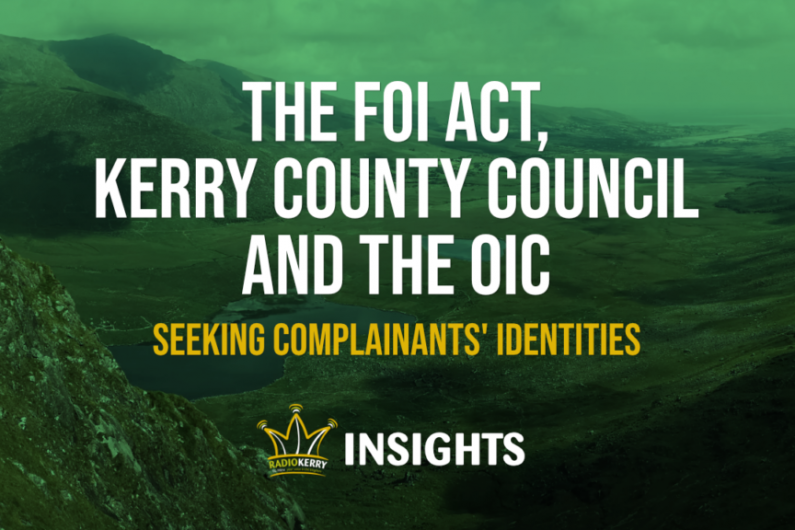An EPA report says water supplies were overdosed with disinfectant in a West Kerry water treatment plant.
The EPA found Kerry County Council failed to manage an incident in order to maintain water quality and protect public health at the Dingle Water Treatment Plant in January of 2020.
The EPA has since made a number of recommendations.
What is the background to this audit?
The Environmental Protection Agency undertook an announced site visit on the 24th January of this year to the Dingle Water Treatment Plant. This was to investigate an incident where the water supply was overdosed with hypochlorite – which is a disinfectant.
The An Daingean Public Water Supply (PWS) produces 1,861 m3/day (that is 1.8 million litres per day) and serves a population of approximately 1,700. The source of the supply is the Garfinny River. It normally operates with two reservoirs, however, there is a third under its remit.
On the morning of January 12th, 2020, plant staff manually dosed sodium hypochlorite directly into one of the reservoirs – this was done to increase chlorine levels, which had gone low.
The report says staff at the plant took corrective action by pouring 10 drums of 25L sodium
hypochlorite (10-12%) directly into reservoir No. 2 at 8am.
Was the increase in chlorine levels noticed by staff?
Yes, the high chlorine alarm was activated and was acknowledged by operational staff. After the alarm is activated, the system waits for 30 mins and then stops water output, if there are no actions taken.
No manual chlorine tests were undertaken to confirm the actual chlorine level in the final water leaving the plant on 12/01/20 or to establish the levels of residual chlorine in the network as a result of the overdosing.
For some context: the level of chlorine desired is less than 1 milligram per litre; the alarm is activated once it reaches 2; however, it doesn’t record the actual solution once it’s greater than 2 mg/l.
Kerry County Council estimated that the error resulted in a level of 20-25 milligrams per litre of chlorine in the water in the reservoir versus the normal chlorine dosing target rate of less than 1 (milligram per litre).
How long did this increased level last for?
The EPA says the level of residual chlorine stayed above 2 mg/l from 8am on 12th, decreasing below 2 mg/l in the final water in the early hours of 13th. So, less than 24 hours.
Twelve complaints related to taste and odour issues were received by Irish Water and Kerry County Council the following morning and the local authority took immediate corrective actions.
It scoured the network, emptied the town reservoir and flushed the mains.
Testing verified that residual chlorine levels had returned to typical levels in the network (of approximately 0.4 mg/l) by morning of 14th January.
For those concerned about chlorine, can you expand a little on the disinfectant and what safe levels are?
Chlorination has been proven to be very effective against bacteria and viruses. However, it cannot disinfect all waterborne pathogens.
According to the EPA, The WHO (World Health Organisation) guideline for chlorine in drinking water is 5 mg/l.
A higher level will be recorded close to the disinfection point and the lower level at the far extremities of the supply network.
In relation to the overdosing at the Dingle Water Treatment Plant, I understand the EPA found fault with the council’s delay in contacting the relevant authorities. Can you tell us more on that?
The HSE was informed of the incident by Kerry County Council at approximately 2.45pm on 13th - the day after the overdosing.
No water restriction was issued following consultation with the HSE.
The council informed Irish Water of the incident at approximately 4.45pm on the same day and the EPA received notification of the incident on 14th.
The EPA says the council failed to notify Irish Water promptly following the incident - as required – and this meant that Irish Water was not included in the risk assessment of the risk to water quality prior to consultation with the HSE.
Kerry County Council and Irish Water also failed to notify the EPA of the incident promptly.
Also, there is a third reservoir in Dingle town (800 m3 capacity) and there is no residual chlorine monitor after this reservoir.
What recommendations did the EPA suggest the council should adopt?
At present residual chlorine is monitored daily at the tap at the Dingle Wastewater Treatment Plant. It is recommended that residual chlorine is undertaken several times a week in other parts of the network.
Sodium hypochlorite is used for disinfection. It is delivered in bulk to the plant. However, the EPA found it had no expiry date provided by the supplier.
The EPA considered that on the 12th there was a lack of supervision and oversight by Kerry County Council of the actions and treatment decisions taken by staff.
Irish Water - which wasn’t informed in time, according to the EPA – was given a number of guidelines to follow. Can you outline a number of those?
The EPA says Irish Water should review the time delays on the low and high (residual) chlorine shutdown setpoints. The current time delay of 30 minutes is too long.
Irish Water should increase the shutdown residual chlorine setpoint of 0.2 mg/l for the final water as it is too low to prevent inadequately disinfected water in the network.
It should put a system in place to ensure stocks of sodium hypochlorite onsite are regularly checked to see if they are in date.
Irish Water had until earlier this month to tell the EPA what actions it will take following the overdosing. However, I believe there were some recommendations arising from this inspection which must now apply to all Irish Water-managed water treatment plants?
Irish Water had to submit a report to the agency on or before 16th April detailing how it has dealt with the issues of concern identified during this audit.
The EPA also advises that the findings and recommendations from this audit report should, where relevant, be addressed at all other treatment plants operated and managed by Irish Water.








